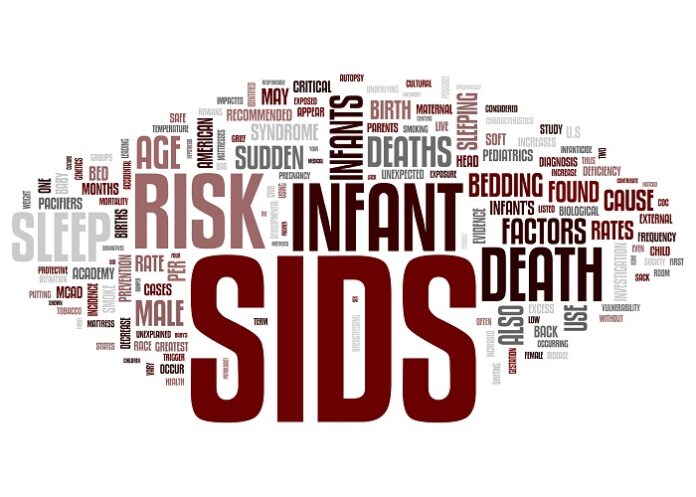Metabolic data from babies who died of sudden infant death syndrome, or SIDs, could help predict the devastating condition, research has revealed, with scientists hoping their findings may contribute to preventing future tragedies.
Now, a study led by doctors in San Francisco has identified a correlation between certain signals, or biomarkers, in the metabolism of infants who died of SIDS.
“There’s something about how these babies are or are not breaking down and using things like fats and glucose that is, at birth, allowing us to identify those who are at the highest risk,” lead study author and epidemiologist Dr Laura Jelliffe-Pawlowski told The Independent.
The authors found that infants with lower levels of the biomarkers C-3 and elevated levels of C-14OH appeared to have a higher risk of mortality from SIDS. The biomarkers are enzymes of fatty acid oxidation, the process in which the body breaks down the building blocks of fat to produce energy.
Several other biomarkers seemed to result in a reduced risk of SIDS when they were elevated.
Co-author and neonatologist Dr Elizabeth Rogers said they don’t yet know the specific contributing drivers to their observations – possibly a combination of environmental and biological ones – which is why more work needs to be done.
The preliminary findings, published in JAMA Paediatrics, were based on the metabolic data from newborn screenings in California, comparing more than 350 infants who died from SIDS with similar infants who lived. The babies were born between 2005 and 2011.
The authors now want to look at other metabolic markers to see if there are more contributing factors.
The end goal for such work could be major for future parents: a screening test or medication for SIDS. That’s still years away, however.
“Critically, though, it’s also in the babies who have died… and being able to say to parents, ‘You did nothing wrong’. I know it doesn’t help bring those babies back, but research has now shown that they may have been metabolically different at birth and we’re doing our best to better understand that so babies in the future have a better chance of surviving,’” said Jelliffe-Pawlowski.
Study details
Early newborn metabolic patterning and sudden infant death syndrome
Scott Oltman, Elizabeth Rogers,Rebecca Baer, et al.
Published in JAMA Paediatrics on 9 September 2024
Abstract
Importance
Sudden infant death syndrome (SIDS) is a major cause of infant death in the US. Previous research suggests that inborn errors of metabolism may contribute to SIDS, yet the relationship between SIDS and biomarkers of metabolism remains unclear.
Objective
To evaluate and model the association between routinely measured newborn metabolic markers and SIDS in combination with established risk factors for SIDS.
Design, Setting, and Participants
This was a case-control study nested within a retrospective cohort using data from the California Office of Statewide Health Planning and Development and the California Department of Public Health. The study population included infants born in California between 2005 and 2011 with full metabolic data collected as part of routine newborn screening (NBS). SIDS cases were matched to controls at a ratio of 1:4 by gestational age and birth weight z score. Matched data were split into training (2/3) and testing (1/3) subsets. Data were analysed from January 2005 to December 2011.
Exposures
Metabolites measured by NBS and established risk factors for SIDS.
Main Outcomes and Measures
The primary outcome was SIDS. Logistic regression was used to evaluate the association between metabolic markers combined with known risk factors and SIDS.
Results
Of 2 276 578 eligible infants, 354 SIDS (0.016%) cases (mean [SD] gestational age, 38.3 [2.3] weeks; 220 male [62.1%]) and 1416 controls (mean [SD] gestational age, 38.3 [2.3] weeks; 723 male [51.1%]) were identified. In multivariable analysis, 14 NBS metabolites were significantly associated with SIDS in a univariate analysis: 17-hydroxyprogesterone, alanine, methionine, proline, tyrosine, valine, free carnitine, acetyl-L-carnitine, malonyl carnitine, glutarylcarnitine, lauroyl-L-carnitine, dodecenoylcarnitine, 3-hydroxytetradecanoylcarnitine, and linoleoylcarnitine. The area under the receiver operating characteristic curve for a 14-marker SIDS model, which included 8 metabolites, was 0.75 (95% CI, 0.72-0.79) in the training set and was 0.70 (95% CI, 0.65-0.76) in the test set. Of 32 infants in the test set with model-predicted probability greater than 0.5, a total of 20 (62.5%) had SIDS. These infants had 14.4 times the odds (95% CI, 6.0-34.5) of having SIDS compared with those with a model-predicted probability less than 0.1.
Conclusions and Relevance
Results from this case-control study showed an association between aberrant metabolic analytes at birth and SIDS. These findings suggest that we may be able to identify infants at increased risk for SIDS soon after birth, which could inform further mechanistic research and clinical efforts focused on monitoring and prevention.
See more from MedicalBrief archives:
SIDS linked to unsafe sleep practices – US analysis
Genetic link finding in SIDS – Danish study
Siblings of SIDS infants at 10-fold risk of same death

